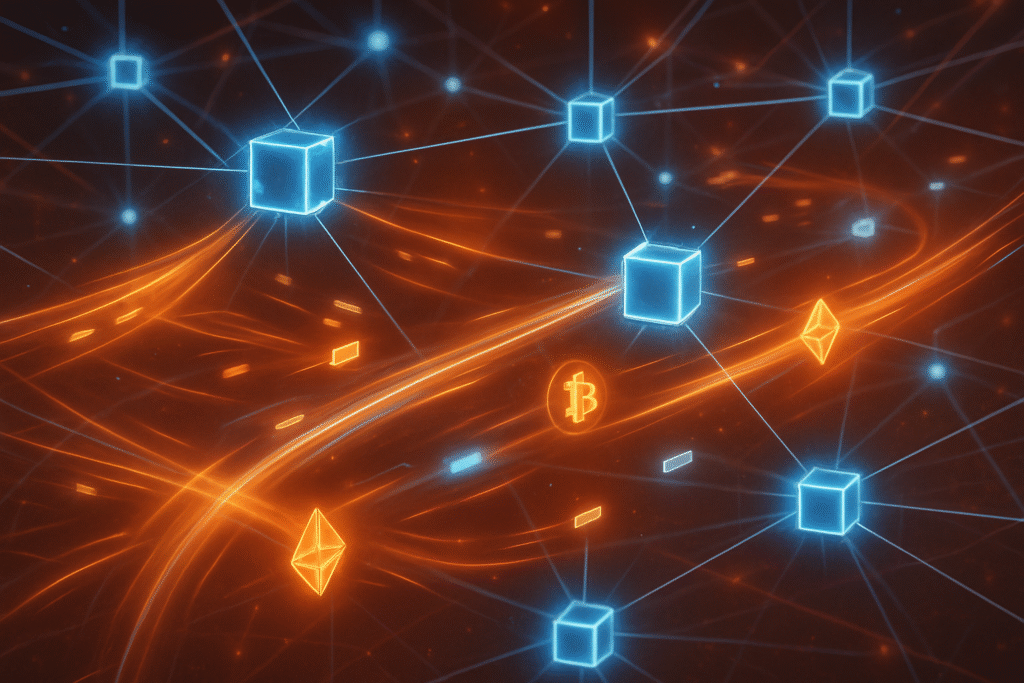Polygon PoS Network Soars with “Rio” Upgrade: A Leap Towards Mass Adoption

October 8, 2025 – The Polygon Proof-of-Stake (PoS) network officially launched its highly anticipated "Rio" upgrade today, marking a pivotal moment in its journey to redefine blockchain scalability and efficiency. This major hard fork, a cornerstone of Polygon's ambitious "GigaGas" roadmap, introduces groundbreaking features like stateless block verification and a redesigned block production model, promising to transform Polygon into a faster, lighter, and more robust platform for global payments and real-world assets (RWAs). The immediate community response has been overwhelmingly positive, anticipating a new era of performance and reliability for the network, though the full market reaction is still unfolding.
The Rio upgrade is not merely an incremental improvement; it's a foundational architectural shift designed to address the core challenges of blockchain scalability. By significantly boosting transaction throughput and enhancing finality, Polygon (MATIC) aims to solidify its position as a leading Layer-2 solution, capable of supporting the next wave of Web3 innovation and enterprise adoption.
Market Impact and Price Action
As the Polygon Rio upgrade officially went live today, October 8, 2025, at approximately 2:12 p.m. UTC, the immediate market impact on the Polygon (POL) token is still in its nascent stages and cannot be fully assessed in real-time. Cryptocurrency markets often react to major upgrades with initial volatility as traders and investors digest the implications of new technical capabilities.
Historically, significant network upgrades across the crypto ecosystem have elicited varied price reactions, ranging from pre-event rallies driven by speculation to post-event corrections or sustained upward trends based on successful implementation and adoption. While specific price movements, trading volumes, or liquidity changes for POL are still developing, analysts are closely monitoring the situation. Technical indicators for POL have shown a mixed picture leading up to the upgrade, suggesting that while the event is a strong fundamental catalyst, broader market sentiment and macro-economic factors will also play a crucial role in its short-term price trajectory. A successful and stable rollout is expected to be a positive driver, potentially pushing POL towards new resistance levels if sustained buying pressure emerges.
Major exchanges, including Binance, paused Polygon (POL) deposits and withdrawals during the hard fork to ensure a smooth transition, a standard practice that often signals broad ecosystem support and confidence in the upgrade process. This temporary halt, while necessary, can sometimes contribute to short-term trading volume adjustments. Investors are advised to monitor on-chain metrics, exchange volumes, and technical charts over the coming days and weeks to gain a clearer picture of the upgrade's impact on POL's market performance.
Community and Ecosystem Response
The launch of the Polygon Rio upgrade has been met with widespread anticipation and a generally positive sentiment across the crypto community and within the Polygon ecosystem. While real-time, granular social media sentiment data for the exact day of launch (October 8, 2025) is still emerging, the overarching mood leading up to and immediately following the hard fork has been optimistic.
Crypto influencers and thought leaders have largely lauded the upgrade as a "big leap forward" and a "maturity moment" for Polygon, recognizing its foundational changes aimed at achieving real-world scale. The technical improvements, particularly the Validator-Elected Block Producer (VEBloP) model and stateless block verification, are seen as critical steps towards Polygon's vision of becoming a robust global payments network and a hub for Real-World Assets (RWAs). Discussions often highlight the potential for the network to reach 5,000 transactions per second (TPS) in the near term, with ambitions for 10,000 TPS or more in the long run.
DeFi protocols, NFT projects, and Web3 applications built on Polygon PoS are expected to be significant beneficiaries. The promised increase in transaction speeds, near-instant finality, and the elimination of chain reorganizations (reorgs) will provide a more stable and efficient environment. This is crucial for high-volume DeFi trading, seamless NFT minting and transfers, and responsive Web3 gaming experiences. Some experts, however, have raised questions about the VEBloP model's potential implications for centralization in block production, a topic that will likely remain a point of discussion as the network evolves. Despite this, the consensus remains that the Rio upgrade enhances Polygon's attractiveness as a platform for innovation, potentially fostering a new wave of development and user adoption across its vibrant ecosystem.
What's Next for Crypto
The Polygon Rio upgrade sets the stage for significant short-term and long-term implications, not just for the Polygon ecosystem but for the broader cryptocurrency market. In the short term, immediate benefits include enhanced performance with faster transaction speeds and near-instant finality for users and dApps. The increased block gas limit from 45 million to 60 million alone boosts throughput by approximately 33%. This improved efficiency is expected to keep transaction costs stable and affordable, even as demand grows, fostering a better developer and user experience. Polygon's enhanced capabilities will intensify competition among Layer-2 solutions, pushing other networks to innovate further in scalability and efficiency. The successful and stable operation of the mainnet post-upgrade will be the most immediate catalyst, validating the technical advancements.
Looking ahead, the long-term implications are profound. The Rio upgrade is a foundational step in Polygon's strategic pivot towards becoming the universal layer for global payments and Real-World Assets (RWAs). By reducing hardware and storage requirements for node operators through stateless verification, the upgrade aims to strengthen decentralization, making participation more accessible. This aligns with the broader Polygon 2.0 vision, which includes the AggLayer for unifying liquidity across blockchains and zkEVM-2 upgrades. Successful integration of these components could position Polygon as a central hub for cross-chain interactions and a formidable competitor to traditional financial infrastructure. Potential catalysts include increased dApp development, major institutional partnerships leveraging Polygon for payments or RWA tokenization, and the continued rollout and adoption of the AggLayer. Investors should strategically consider Polygon's position within the wider Ethereum scaling ecosystem, monitoring its performance against competitors like Arbitrum and Optimism.
While the upgrade promises massive scalability, the Validator-Elected Block Producer (VEBloP) model, designed to boost throughput, has sparked some debate regarding potential centralization in block production. This potential trade-off between efficiency and decentralization will be a key area of scrutiny. Possible scenarios range from an optimistic growth trajectory, where Polygon achieves its 5,000+ TPS targets, leading to a surge in adoption and POL token appreciation, to a more measured success, or even scenarios with initial technical challenges that require further refinement. Projects should leverage these new capabilities for high-throughput dApps, while investors should monitor network performance, adoption rates, and the evolving POL tokenomics.
Bottom Line
The Polygon Rio upgrade, launched on October 8, 2025, represents a monumental leap forward for the Polygon Proof-of-Stake network, fundamentally reshaping its architecture for superior scalability, efficiency, and reliability. For crypto investors and enthusiasts, the key takeaway is a significant performance boost, with the network now engineered to handle approximately 5,000 transactions per second (TPS) and a long-term vision exceeding 10,000 TPS. Features like stateless block verification (PIP-72) drastically reduce hardware requirements for validators, fostering greater decentralization and cost efficiency, while the Validator-Elected Block Producer (VEBloP) model (PIP-64) promises near-instant transaction finality by eliminating chain reorganizations.
This upgrade is a cornerstone of Polygon's ambitious "GigaGas" roadmap and its broader Polygon 2.0 vision to become the "value layer of the internet." Its long-term significance lies in paving the way for Polygon to become a dominant platform for high-volume global payments and the burgeoning Real-World Asset (RWA) sector. By drastically improving user experience through faster, more reliable, and affordable transactions, Rio is poised to accelerate mainstream crypto adoption, lowering barriers for both developers and enterprises to build and integrate blockchain technology.
Important metrics to monitor include the actual TPS achieved on the Polygon PoS mainnet, network activity (daily active users, transaction volume, TVL), validator growth and distribution, and the price performance of the POL token, which analysts suggest could see a recovery towards $0.30-$0.39 with sustained positive momentum. Furthermore, watch for news on RWA and global payment integrations, as well as ongoing discussions around the decentralization implications of the VEBloP model. The successful rollout and sustained performance of the Rio upgrade will be critical in solidifying Polygon's position as a leading force in the Web3 ecosystem.
This article is for informational purposes only and does not constitute financial or investment advice. Cryptocurrency investments carry significant risk.
More News
View More




Recent Quotes
View More
Quotes delayed at least 20 minutes.
By accessing this page, you agree to the Privacy Policy and Terms Of Service.